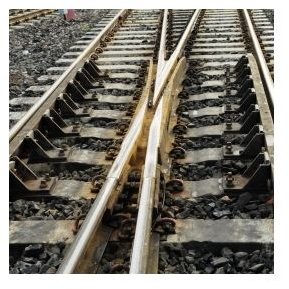What was Revolutionary about the Industrial Revolution?
The Revolutionary Shift from Agricultural to Industrial Society
In a broad sense what was revolutionary about the industrial revolution was that it changed the entire context of life and framework of world history. Although the first industrial revolution spanned many decades in the late 18th century and early 19th century, the world was forever altered by the introduction of new technologies and economical restructuring of society. The industrial revolution primarily impacted Western countries but it did lead the way to increased global trading and eventually provided an example for other countries to undergo their own industrial revolutions. The industrial revolution changed the habits and thoughts of people, encouraging the consumer and production mentality that comes along with industrialization.
The Foundation for Change
The industrial revolution started slowly and was based on the foundation of intuitive knowledge laid by early scientific thinkers. Once it gained momentum there was no way for it to be stopped. Engineering, the practical application of knowledge of the natural sciences, was developed in a widespread manner during the beginning of the industrial revolution. With an understanding of natural science and the shift from an agricultural based society to an industrialized society, engineering transformed nature for the purpose of serving large numbers of people. Entrepreneurs recognized the potential of new technology and observed the economic habits that dominated the previous and current generations in order to give people the products and services they desired.
Driving the Revolution with New Sources of Power
The ultimate driving force of the industrial revolution was the progressive replacement of human power used in production with motors powered by fossil fuels. Textile machinery greatly decreased the time and effort of workers to create textiles, a widely consumed and traded commodity even prior to the industrial revolution. New agricultural machinery allowed farmers not to rely so much on draft animals and manual human labor which in turn allowed for higher rates of food production to support the high population growth rate during the industrial revolution. The success of the first factories proved that people were willing to change the way they did work prior to the industrial revolution for the promise of economic gain.
The potential to produce electrical power allowed homes and factories previously lit with candles or gas-fired lamps to switch to light bulbs lit with electrical current. Communication technologies also developed, allowing people in different locations to connect through telephone lines. Electrical engineering became an established field within the scientific community and more and more systems incorporated electricity as a power source as the years went by.
Major Expansion of Infrastructure

Transportation became easier and more efficient as engineers developed new transportation machines and infrastructure. Mechanical engineers designed steam powered ships and trains for transportation. The discovery of the internal combustion engine led to the expansion of transportation technologies such as the automobile. Civil engineers designed navigable canals, railways, and improved roads to allow for the ever growing need for transportation of goods and for people’s desire to travel.
Material Resources Availability
The development of infrastructure during the industrial revolution required an immense amount of material resources to be extracted and transported throughout the world. Enhanced mining machinery and methods provided the means to meet the resource extraction demand. Logging of trees for building homes and for making paper and other products also became possible with the development of the railway and road systems. Improvements in metallurgical processes allowed for iron, steel and other metals to become reliable resources for creating new tools and machines, and for building construction materials. Concrete became a widely used material for creating structures. Cities were able to be constructed due to the amount of material resources that became available during the industrial revolution.
This Changed Everything
The habits and thoughts of people were forever changed as the industrial revolution transformed society from an agricultural society to an industrialized society. The way people worked changed, the reasons for working changed, and where people lived changed. Mechanical and civil engineering emerged as professions and allowed practical solutions to current or predicted future needs to be developed on a massive scale. As time moved on new branches of engineering emerged to provide designs for human benefit including electrical, chemical, structural, and much later aeronautical, nuclear, and computer engineering. Machines allowed companies to change the organizational structure of employment and resulted in undeniable competition for those individuals who were not willing to work for a large company or corporation and move to a city to do so. The idea of working for economic gain inspired people to participate in the revolution of industrialization which resulted in a steady increase to the standard of living. The first industrial revolution led to industrialization throughout the world and provided the roots for engineers and scientists to use the scientific process to continuously develop new technologies and infrastructure for the betterment of humankind.
References
1. Stearns, Peter N. (1998), “The Industrial Revolution in World History", Westerview Press.
3. “History of Industrial Engineering - The Industrial Revolution”
Image Credits:
- Rusted Industrial Gear by Michal Marcol / FreeDigitalPhotos.net
- Traintracks by Samurai / FreeDigitalPhotos.net
